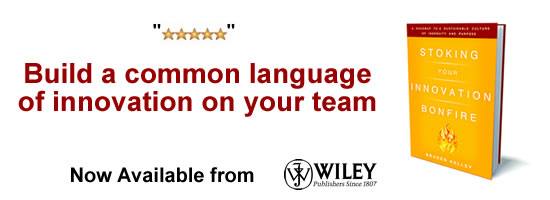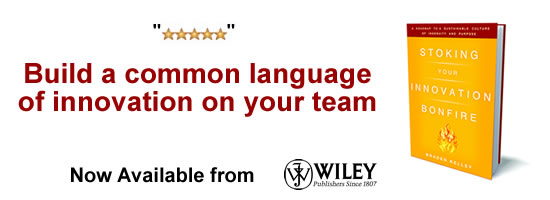
Innovation is everywhere.
You can’t go an entire commercial break during the Super Bowl or a State of the Union address (okay, sorry, both American examples) without hearing the word innovation pop up at least once or twice. Companies have added innovation to their company values and mission statements in accelerating numbers. Some organizations have implemented idea management systems. And others are willing to spend large sums of money on design firms and innovation boutique consultancies to get help designing some new widget or service to flog to new or existing customers. Based on all of that you would think that most companies are committed to innovation, right?
If you asked most CEOs “Is your organization committed to innovation?”, do you think you could find a single CEO that would say no?
So, why do think I’m about to make the following statement?
90+% of organizations have no sustained commitment to innovation.
When it comes to fostering continuous innovation, most organizational cultures stink at it.
Let’s look at some data, because anyone who is committed to innovation (and not just creativity) should love data (especially unstructured data from customers):
- Over the last 50 years the average lifespan of a company on the S&P 500 has dropped from 61 years to 18 years (and is forecast to grow even shorter in the future)1
- In a worldwide survey of 175 companies by Hill & Knowlton (a communications consultancy), executives cited “promoting continuous innovation” as the most difficult goal for their company to get right. “Structurally, many companies just aren’t set up to deliver continuous innovation.”2
- 84% of more than 2,200 executives agree that their organization’s culture is critical to business success3
- “96% of respondents say some change is needed to their culture, and 51% think their culture requires a major overhaul.”3
So what does this data tell us?
For one thing, it helps to reinforce the notion that the pace of innovation is increasing.
For another thing, it doesn’t exactly scream that organizations are as committed to building an innovation culture internally as their words externally say about being committed to innovation.
Why is this?
Well, as fellow Innovation Excellence contributor Jeffrey Phillips once said:
“When it comes to innovation, ideas are the easy part. The cultural resistance learned over 30 years of efficiency is the hard part.”
And when you get right down to it, most employees in most organizations are slaves to execution, efficiency, and improvement. And while those things are all important (you can’t have innovation without execution), organizations that fail to strike a balance between improvement/efficiency and innovation/entrepreneurship, are well, doomed to fail.
This increasing pace of innovation along with the lower cost of starting/scaling a business and the always difficult challenge of building a productive culture of continuous innovation, is the reason that the lifespan of organizations is shrinking.
So if it isn’t enough to talk about innovation, or to invest in trying to come up with new products and services, shouldn’t more organizations be also investing to making sure their innovation culture doesn’t, well, stink?
The obvious answer is… (insert yours here)
So, if your innovation culture stinks, I encourage you to come join me at Pipeline 2014 and attend my keynote session on exploring five ways to make it smell better:
“Our Innovation Culture Stinks – Five Ways to Make it Smell Better”
It’s a free virtual event on June 6, 2014.
I look forward to seeing you there!
Sources:
1. Innosight/Richard N. Foster/Standard & Poor’s
2. Hill & Knowlton Executive Survey
3. Booz & Company Global Culture and Change Management Survey 2013

![]() Sign up here to get Human-Centered Change & Innovation Weekly delivered to your inbox every week.
Sign up here to get Human-Centered Change & Innovation Weekly delivered to your inbox every week.
 ‘What are three specific actions that a non-innovative company can take to become more innovative?’
‘What are three specific actions that a non-innovative company can take to become more innovative?’